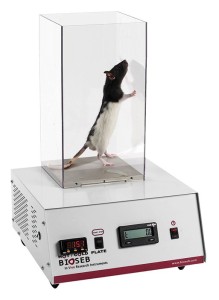Authors
P Li, Y Bi, Y Deng, D Xiong, A Li
Lab
Department of Pain Medicine, Shenzhen Longgang People’s Hospital, Shenzhen, China
Journal
Natural Product Communications
Abstract
Bone cancer pain is characterized by moderate to severe ongoing pain that commonly requires the use of opiates, which could produce tolerance or addiction. Baicalin is a flavonoid compound extracted from Huang Qin, possesses antioxidant properties, and has an analgesic effect on nitroglycerin-induced migraine in rats and neuropathic pain in spinal nerve ligation rats. However, the effect of baicalin on bone cancer pain is still unclear. Therefore, the aim of this study is to examine the analgesic effect of baicalin in a rat model of bone cancer pain. Bone cancer pain animal model was created by tumor cell implantation (TCI). Animal behaviors were measured using a set of mechanical or electronic von Frey apparatus and hot plate. mRNA expression and inflammation cytokine levels were examined by Quantitative polymerase chain reaction (qPCR) and enzyme linked immunosorbent assay (ELISA) methods. Baicalin suppressed the upregulation of transient receptor potential vanilloid 1 (TRPV1), but not transient receptor potential A1 in dorsal root ganglion (DRG) of TCI rats. In addition, the phosphorylation of extracellular regulated protein kinases (ERK) was also suppressed by baicalin injection in DRG of TCI rats. Our results revealed that baicalin might play a promising analgesic role by preventing the upregulation of TRPV1 in DRG of TCI rats. Baicalin administration prevented the progress of bone cancer pain and reduced mechanical allodynia and thermal hyperalgesia. Our study clearly established a novel role of baicalin as an analgesic agent for bone cancer pain. And the analgesic role of baicalin in bone cancer pain might involve a TRPV1.
BIOSEB Instruments Used
Cold Hot Plate Test (BIO-CHP)
Source :
https://journals.sagepub.com/doi/full/10.1177/1934578X19899562

 Pain - Thermal Allodynia / Hyperalgesia
Pain - Thermal Allodynia / Hyperalgesia Pain - Spontaneous Pain - Postural Deficit
Pain - Spontaneous Pain - Postural Deficit Pain - Mechanical Allodynia / Hyperalgesia
Pain - Mechanical Allodynia / Hyperalgesia Learning/Memory - Attention - Addiction
Learning/Memory - Attention - Addiction Physiology & Respiratory Research
Physiology & Respiratory Research











![Dynamic Weight Bearing 2.0 – Postural Module [Add-on]](https://bioseb.com/733-home_default/dynamic-weight-bearing-20-add-on-postural-module.jpg)
























 Pain
Pain Central Nervous System (CNS)
Central Nervous System (CNS) Neurodegeneration
Neurodegeneration Sensory system
Sensory system Motor control
Motor control Mood Disorders
Mood Disorders Other disorders
Other disorders Muscular system
Muscular system Joints
Joints Metabolism
Metabolism Cross-disciplinary subjects
Cross-disciplinary subjects CONFERENCES & MEETINGS
CONFERENCES & MEETINGS 